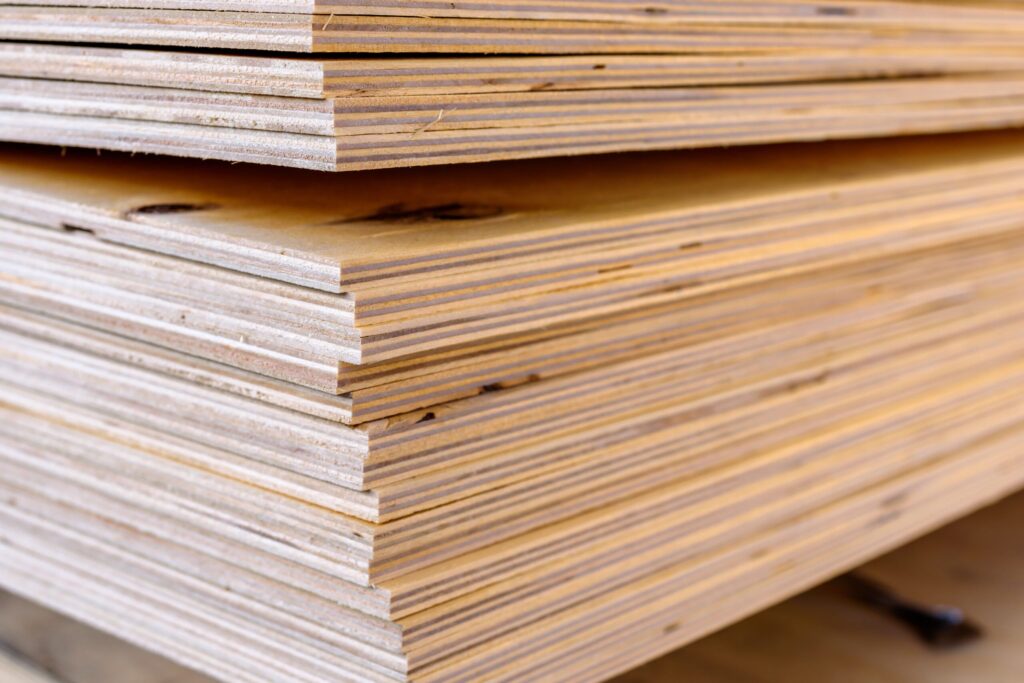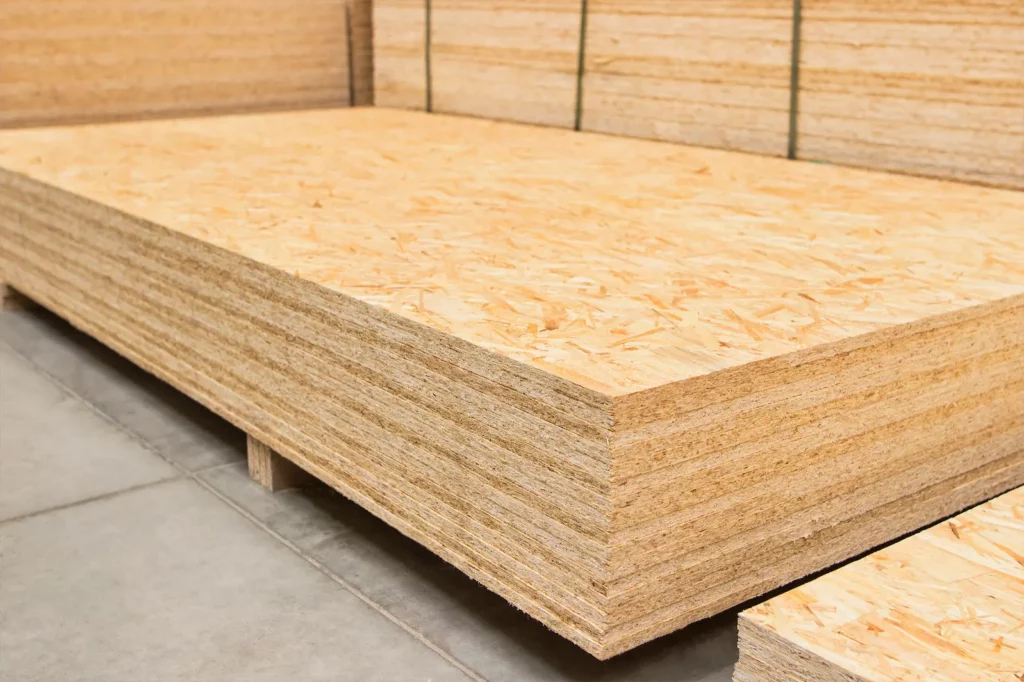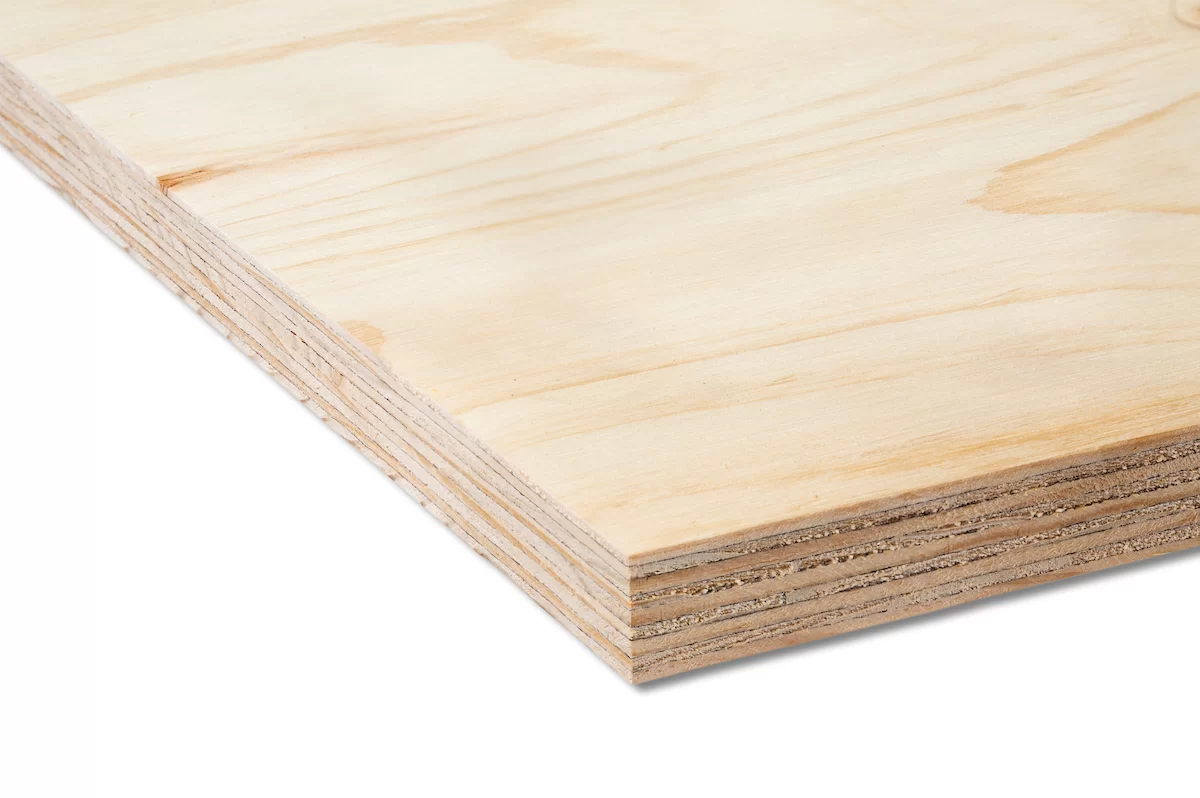What Is Formwork Plywood and Why Is Choosing the Right Grade Important?
Formwork plywood serves as a temporary mould or structure that holds fresh concrete in place until it hardens into the desired shape. This specialised construction material creates the framework for walls, columns, beams, and other concrete elements in building projects.
The selection of the correct plywood grade directly impacts:
- Concrete finish quality
- Project safety
- Construction costs
- Build timeline
- Structure durability
F14 and F17 grade plywood represent two distinct quality levels in formwork applications. F14 grade plywood, manufactured primarily from softwood veneers, suits residential and light commercial projects. F17 grade plywood, crafted from premium hardwood veneers, delivers superior strength for heavy-duty construction demands.
Your choice between these grades can make the difference between:
- A smooth vs rough concrete finish
- Single vs multiple uses of formwork sheets
- Meeting vs missing project deadlines
- Staying within vs exceeding budget constraints

The grade you select must align with your specific project requirements. F14 grade works well for basic residential foundations, while F17 grade proves essential for high-rise buildings, bridges, and infrastructure projects where structural integrity demands are higher.
A mismatch between formwork grade and project needs can lead to concrete defects, safety risks, and costly rework – making grade selection a critical decision in your construction planning process.
Learn more on: Where to Buy Reo Bar for Small and Large Construction Projects
What Are the Key Differences Between F14 and F17 Grade Plywood?
The “F” rating in plywood grades represents the stress grade, indicating the material’s structural performance and load-bearing capacity. F17 plywood offers higher strength properties compared to F14, with stress grades of 17 MPa and 14 MPa respectively.
Material Composition
- F14: Predominantly softwood veneers
- F17: Premium hardwood veneers
- Both grades feature cross-laminated construction
Phenolic Adhesive Properties
- F14: Standard phenolic adhesive bonding
- F17: Enhanced phenolic resin formulation
- Both grades meet AS/NZS 2754.1 standards
Physical Characteristics
- Thickness RangeF14: 12mm to 25mm
- F17: 12mm to 30mm
- DensityF14: 600-650 kg/m³
- F17: 700-750 kg/m³
Surface Quality
F17 grade plywood delivers superior surface finish with tighter manufacturing tolerances. The enhanced phenolic film coating creates smoother concrete surfaces, reducing the need for post-pour treatments. F14 provides acceptable finish quality for standard applications but may require additional preparation for exposed concrete surfaces. Learn more about phenolic on https://pmc.ncbi.nlm.nih.gov/articles/PMC6274266/
Durability Features
F17’s higher-density construction and premium adhesive system result in better moisture resistance and extended service life. You’ll achieve 20-30% more reuses with F17 compared to F14 under similar site conditions.
The enhanced structural properties of F17 make it suitable for demanding applications where higher strength and durability are essential. F14 remains a cost-effective choice for standard construction projects with moderate performance requirements.
How Do Load Requirements Influence the Choice Between F14 and F17 Plywood?
Load-bearing capacity is a crucial factor in selecting between F14 and F17 plywood grades for formwork applications.
Understanding F14 Plywood
F14 plywood, classified as medium-duty, supports loads up to 14 MPa, making it suitable for residential construction and low-rise buildings. You’ll find F14 performing well in projects like:
- Single-storey homes
- Garages
- Small commercial structures

Understanding F17 Plywood
F17 plywood delivers superior structural strength with a load capacity of 17 MPa. This heavy-duty grade excels in high-rise construction, infrastructure projects, and commercial developments where concrete pressures reach significant levels.
The enhanced load resistance of F17 proves essential for:
- Multi-storey buildings
- Bridge construction
- Underground parking structures
- Industrial facilities
Your choice between these grades directly impacts site safety and structural integrity. F17’s higher load capacity reduces the risk of formwork failure during concrete pours, particularly in applications with substantial hydrostatic pressure. Using F14 in high-load situations can lead to bulging, deformation, or catastrophic formwork collapse.
The Australian Standards specify minimum load requirements for different construction types. Selecting the appropriate grade ensures compliance with these regulations while maintaining worker safety and construction quality.
How Does Project Scale Affect the Choice of Formwork Plywood Grades?
The size and scale of your project play a crucial role in deciding whether to use F14 or F17 grade plywood for formwork. Each grade is designed to meet specific construction requirements based on the size and complexity of the project.
When to Use F14 Grade Plywood
F14 grade plywood is suitable for smaller projects, including:
- Small residential builds
- Low-rise structures (1-3 storeys)
- Basic home extensions
- Garden retaining walls
- Simple concrete foundations
When to Use F17 Grade Plywood
For larger and more complex projects, F17 grade plywood is the preferred choice. It is commonly used in:
- High-rise buildings
- Commercial developments
- Bridge construction
- Underground parking structures
- Major infrastructure projects
The scale of your project also affects how you source materials. Smaller projects can benefit from the advantages of F14 grade plywood, such as:
- Lower upfront costs
- Ready availability
- Easier handling
- Sufficient strength for basic applications
On the other hand, large-scale projects require the benefits offered by F17 grade plywood, including:
- Enhanced durability for repeated use
- Higher strength for complex formations
- Better resistance to site conditions
- Superior performance under intensive use
Additionally, the quantity of materials you need will influence your procurement decisions. Bulk orders of F17 grade plywood may require advance planning and specialised suppliers, while F14 grade plywood can be easily sourced from standard building merchants. To learn more about materials click here.
How Important Is Budget When Choosing Between F14 and F17 Plywood?
Budget considerations play a crucial role in selecting formwork plywood grades. F14 plywood offers a cost-effective solution with prices typically 15-20% lower than F17 grade materials. This initial saving attracts contractors working under strict budget constraints.
The price difference becomes less significant when you factor in durability. F17 plywood can withstand:
- 30-40% more reuse cycles
- Higher resistance to wear and tear
- Reduced maintenance requirements
A practical cost analysis reveals that F17 grade plywood’s extended lifespan offsets its higher upfront cost. While F14 might need replacement after 8-10 uses, F17 can maintain its structural integrity for 12-15 uses under similar conditions.
The maintenance costs also differ significantly:
- F14 requires more frequent repairs and surface treatments
- F17’s superior durability reduces repair frequency by up to 40%
- Labour costs for maintenance decrease with F17 grade
Your project’s timeline affects these cost dynamics. Shorter projects might benefit from F14’s lower initial investment, while longer-term developments often see better value with F17’s durability advantages.
How Do Durability and Reusability Influence Plywood Selection?
F17 grade plywood is known for its exceptional durability, lasting around 15-20 uses on average. In contrast, F14 grade plywood typically lasts 8-12 uses in standard construction conditions. This significant difference directly affects how efficiently you can use materials and manage waste in your project.
Key Factors Affecting Durability:
- F17’s hardwood veneer composition resists wear and tear
- Enhanced moisture resistance in F17 prevents warping
- F14’s softer composition makes it more susceptible to damage
Extending Plywood Life Through Maintenance:
- Apply release agents before each pour
- Clean surfaces immediately after stripping
- Store panels flat in covered areas
- Repair minor damages promptly
- Seal exposed edges with waterproof coating
The durability advantage of F17 plywood becomes especially valuable in projects that require multiple concrete pours. Your maintenance practices are crucial in maximising the reuse potential of both grades. With proper care, you can extend the usability of F14 by 20-30%, while well-maintained F17 panels may have additional uses beyond their standard lifespan.
Regularly inspecting the panels between uses helps identify which ones are still suitable for service, ensuring optimal safety and concrete finish quality in future pours.
Why Is Surface Finish Quality Relevant When Choosing Formwork Plywood?
The surface quality of formwork plywood directly impacts the final appearance of concrete structures. F17 grade plywood creates smoother, more aesthetically pleasing concrete surfaces due to its superior veneer quality and tighter manufacturing tolerances.
Surface characteristics affect concrete aesthetics:
- F17 plywood reduces surface blemishes and air bubbles
- Minimal grain transfer to concrete surfaces
- Consistent colour and texture across concrete panels
High-Density Overlay (HDO) coatings enhance formwork performance:
- Resin-impregnated overlay prevents concrete adhesion
- Easier release and cleaning after use
- Extended lifespan of formwork panels
- Reduced need for concrete surface treatments
F14 grade plywood might require additional treatments or multiple pours to achieve similar finish quality. The natural grain pattern can transfer to concrete surfaces, creating inconsistent appearances across different panels.
Surface quality considerations:
- Architectural concrete requirements
- Client specifications for visible surfaces
- Project aesthetic standards
- Cost implications of post-pour treatments
The choice between F14 and F17 grade plywood becomes crucial for projects where concrete finish quality is a priority, particularly in architectural applications or exposed concrete elements.
How Do Building Specifications and Regulatory Standards Influence Grade Choice?
Australian construction standards set strict requirements for formwork materials, with AS 3610 serving as the primary guideline for formwork design and construction. This standard specifically addresses plywood grades and their applications in different construction scenarios.
Key regulatory requirements include:
- Minimum stress grade ratings for specific construction types
- Surface quality specifications for exposed concrete finishes
- Load-bearing capacity requirements for different building heights
- Safety factors and engineering calculations
The selection of F14 or F17 grade plywood must align with these standards based on your project’s specific requirements. F17 grade meets higher regulatory thresholds, making it mandatory for certain commercial and high-rise construction projects.
Non-compliance risks:
- Project delays due to failed inspections
- Additional costs for material replacement
- Legal liability and insurance issues
- Potential structural failures
- Workplace safety violations
Building certifiers and engineers often specify minimum plywood grades in their documentation. You’ll need to maintain detailed records of the formwork materials used, including grade certificates and supplier documentation, to demonstrate compliance with Australian Standards.
What Are the Availability and Procurement Considerations for Each Grade?
F14 grade plywood offers widespread availability through local hardware stores, building suppliers, and online marketplaces. You’ll find F14 stock readily available in standard sizes, making it an accessible choice for immediate project needs.
F17 grade plywood presents specific procurement challenges:
- Limited number of manufacturers produce F17 grade
- Stock typically held by specialised construction suppliers
- Custom orders might require 4-6 weeks lead time
- Minimum order quantities often apply
These availability factors directly impact your project planning:
F14 Grade Benefits
- Quick local sourcing
- Flexible purchase quantities
- Multiple supplier options
- Competitive pricing through market competition
F17 Grade Considerations
- Pre-ordering requirements
- Restricted supplier network
- Higher minimum order quantities
- Premium pricing due to limited availability
Supply chain disruptions can affect both grades, but F17’s limited production sources make it particularly vulnerable to delays. You’ll need to factor these procurement timelines into your project schedule, especially for large-scale developments requiring substantial quantities of F17 plywood.
How Can Consulting Experts Help in Selecting the Right Formwork Plywood Grade?
Professional guidance proves invaluable when selecting between F14 and F17 formwork plywood. Early consultation with builders and suppliers helps you:
- Identify specific project requirements
- Assess site conditions
- Calculate accurate material quantities
- Determine optimal grade selection
Expert recommendations extend beyond basic grade selection. Builders can provide insights into:
- Local climate impact on materials
- Concrete pour scheduling
- Surface finish requirements
- Safety considerations
Supplier advice helps you understand:
- Current market availability
- Price fluctuations
- Lead times for delivery
- Alternative options when preferred grades aren’t available
Safety-Critical Decisions Professional guidance prevents costly mistakes in formwork selection. Experts assess load requirements, structural integrity, and compliance with Australian construction standards – critical factors that impact worker safety and project success.
Expert Tip: Schedule consultations during your project’s planning phase to avoid delays and ensure appropriate material selection.

